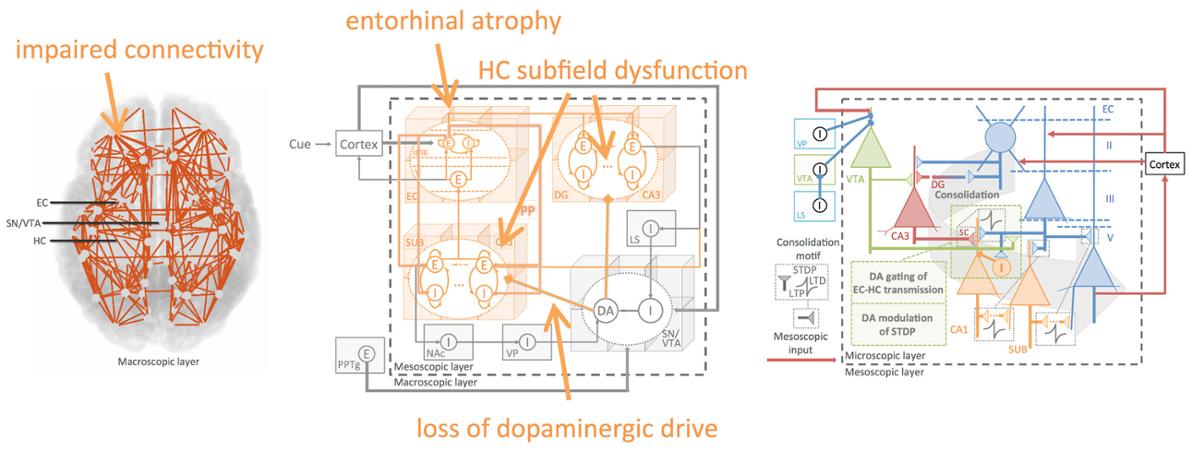One of the major features of the human brain is its “plasticity”, i.e. how it learns, changes, memorizes and forgets. This is still a big mistery with many competing theories, and difficult to research because our brain is not a simple storage machine like a computer.
Memories in the brain are distributed over brain areas, different ensembles of cells, different timescales, and different mechanisms from molecular/synaptic level right up to the systems level. Understanding the process of memory consolidation in healthy and pathological brains will open revolutionary new paths to combat the well-known deficiencies related to neurodegenerative diseases (NDD) like Alzheimer’s and loss of cognitive functions by natural aging.
The Brain Simulation Section is part of a large Collaborative Research Center (CRC) about memory consolidation, joining the forces of theoretical neuroscientists with biologists and clinicians.
Our team contributes profound expertise in simulating multi-scale brain dynamics and will extend and advance the simulation framework of The Virtual Brain (TVB) to better reflect the neurophysiological processes which are involved in hippocampal memory consolidation and its dopaminergic modulation:


Macroscopic layer:
hybrid modeling approach, injecting neural populations with a driving current derived from EEG source activity, enabling the reproduction of the temporal dynamics of subject-specific fMRI activity
Mesoscopic layer:
medial temporal and midbrain memory loops simulated on voxel resolution
Microscopic layer:
application of spiking neuron models using a generic network motif in combination with spike-timing dependent plasticity (STDP) that was shown to facilitate system memory consolidation over a range of circuits from hippocampus into cortex
Until recently, it was impossible to measure the relevant human brain circuits in a non-invasive way. However, in the joint effort of the memory consolidation CRC, the Brain Simulation Section will be able to use the latest methodological advances in ultrahigh-resolution, layer-specific MRI at 7T and MR-PET to gain simulation data of exceptional quality.